 |
| Three principal tile contractors were used at platform
level: |
W.B. Simpson & Sons affixed tiles manufactured by
Maw & Company;
George Woolliscroft & Son;
The Permanent Decorative Glass Company;
(H&R Johnson made the tiles at one station only). |
| It is not known who affixed the tiles made by Woolliscroft
and The Permanent Decorative Glass Company. It may have been by their
own staff or sub-contracted. |
| Less is known about the tiling at booking hall level,
though it is known that the majority were provided by Maw/Simpson
and Woolliscroft. |
| A number of stations had contractor’s ‘trade’ tiles fixed;
some on the platforms and some around lower lift entrances. None have
been found at Permanent Decorative Glass Company stations. Those of
Maw/Simpson and Woolliscroft were the normal 9x3-inch size. |
 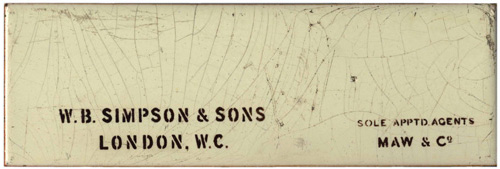 |
 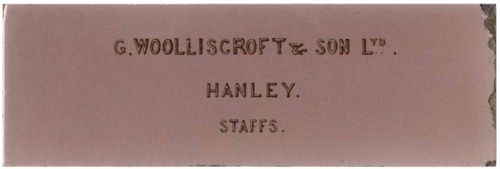 |
| |
| Faience tiles characterized Leslie Green booking
halls, where one row of these was affixed at about shoulder height
(this varied from station to station). A few stations had plain green
tiles in this location though all measured 9x6 inches. |
 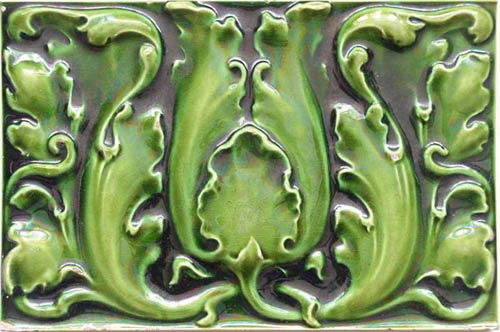 |
| The booking hall tile shown above was made by Maw
and fixed by Simpson. |
| |
  |
| The booking hall tile shown above came from Woolliscroft.
|
| |
| |
| During the 23-year research project some 200 tiles were
retrieved and it is a testimony to the quality of workmanship nearly
one hundred years earlier, that these were commonly very difficult
to remove in one piece. Illustrated below are the backs of the main
variations found. |
| Maw used a double grip circular ‘lock-back’ which made the tiles very secure on the wall. Two rubber rings were fixed in the bottom of the press die and, as the clay was compressed under the pressure of the press, the rings flattened slightly, creating an undercut ‘dovetail’. When the pressure was released the rubber rings were easily removed. |
  |
 |
| |
| |
| Woolliscroft used three different types of tile back
design and, at at least one station, all three have been noted apparently
mixed randomly. The common theme is of a kind of saw-tooth. The top
illustration shows it applied in a sort off ‘herring-bone’ configuration;
the next one down has the same device but used as multiple rectangles
and the lower photograph shows the rather fossil-like application
as three circles of saw teeth. |
  |
  |
| |
| |
  |
 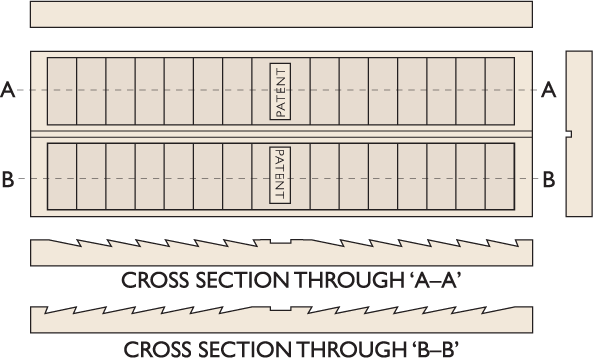 |
| |
| |
 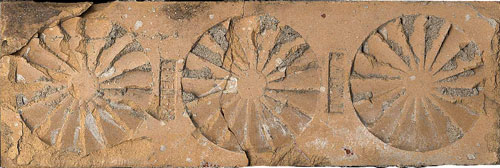 |
 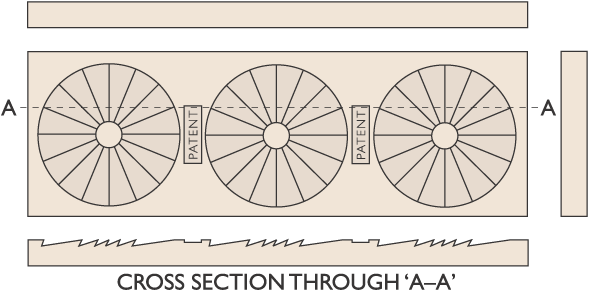 |
| |
| |
| The tile backs of The Permanent Decorative Glass Company
were almost flat with very little inherent grip. This short-coming
was evident by the time of this study where it was noticeable how
many more of these had parted company with the platform walls compared
with those of other manufacture. |
  |
 |
| |
| Go to next section >> |